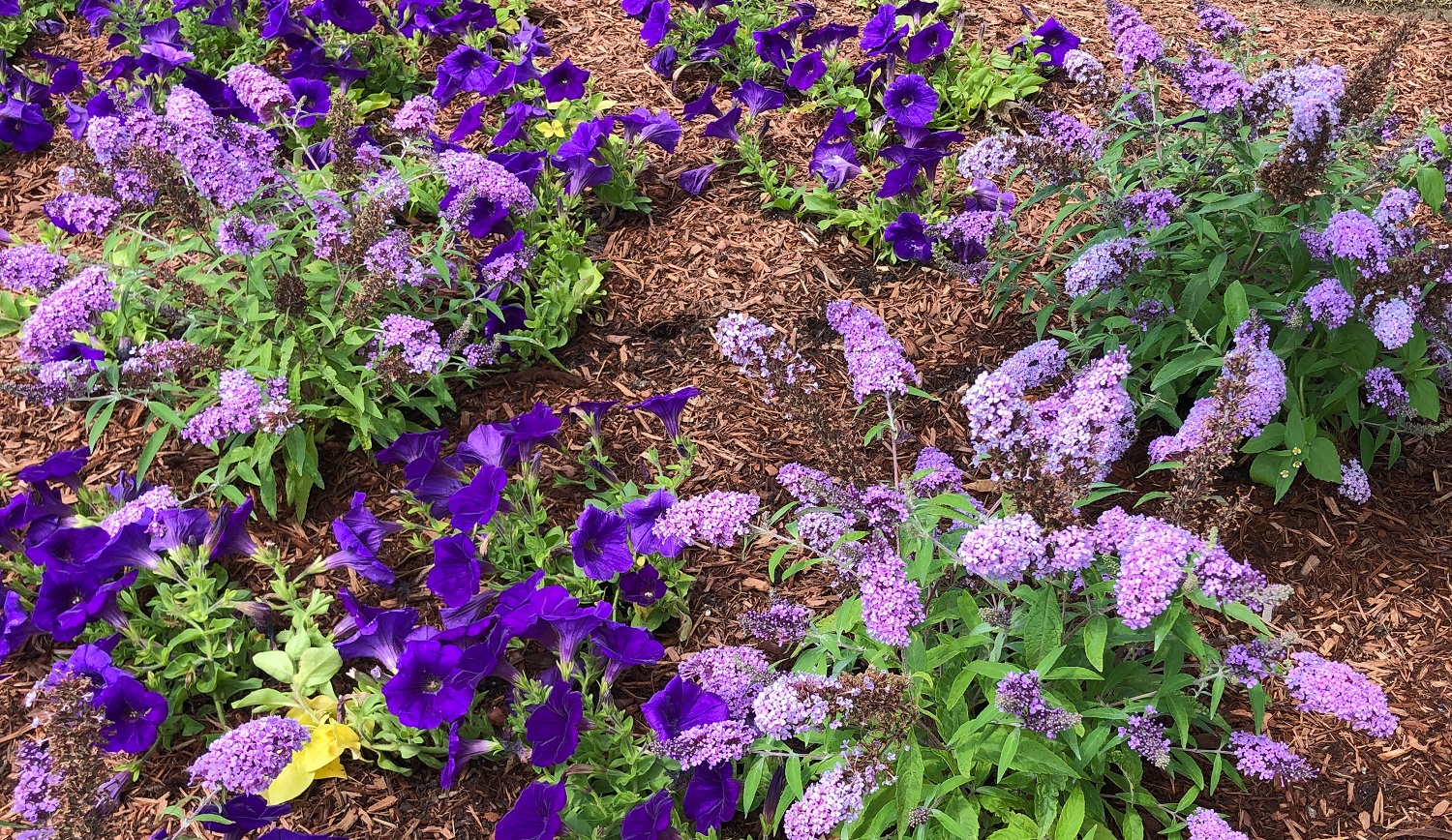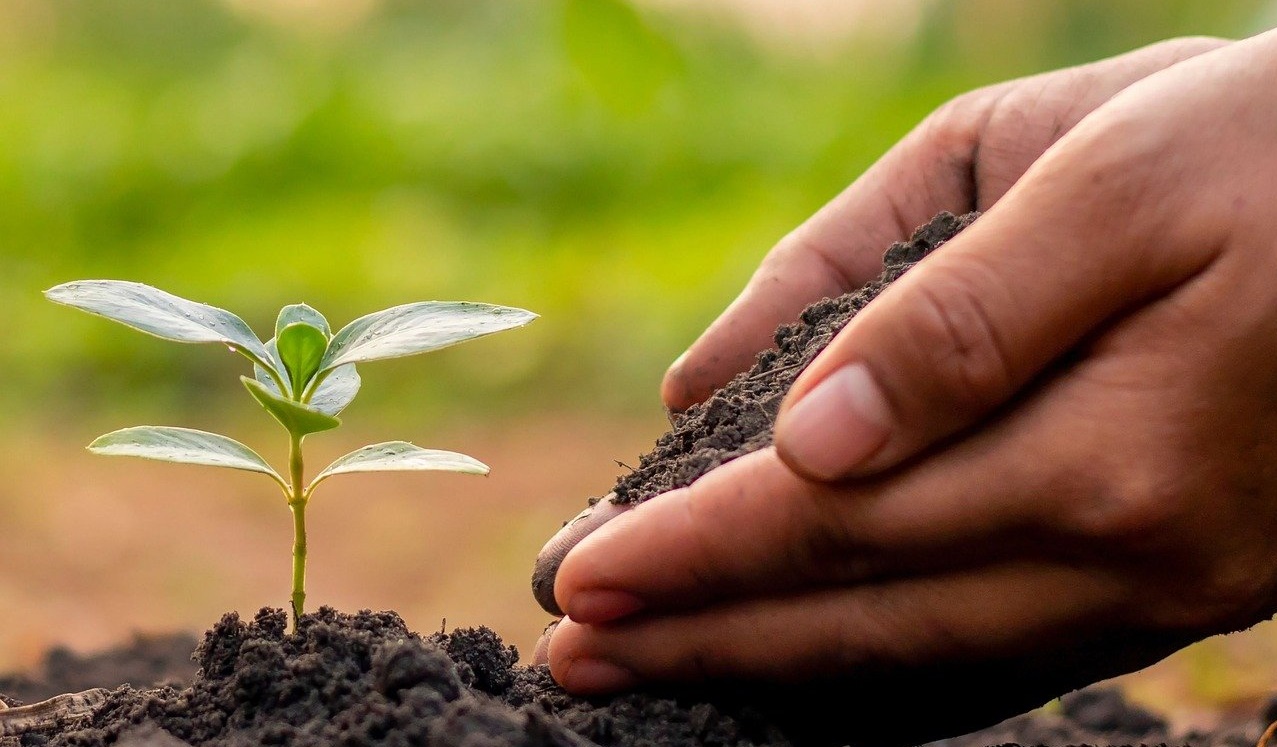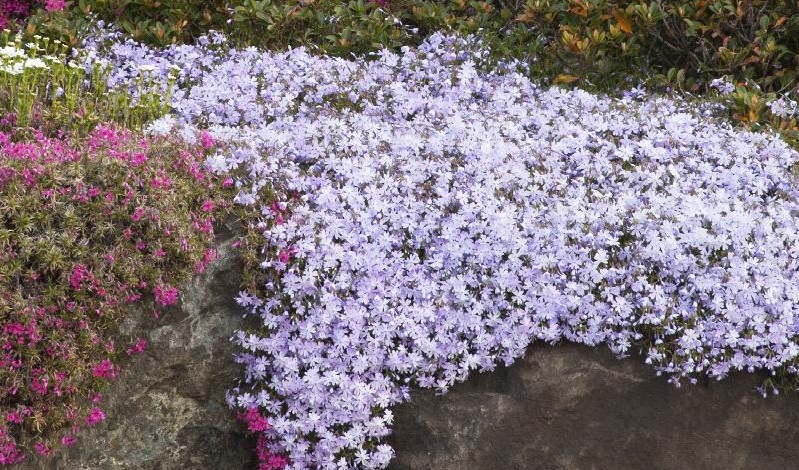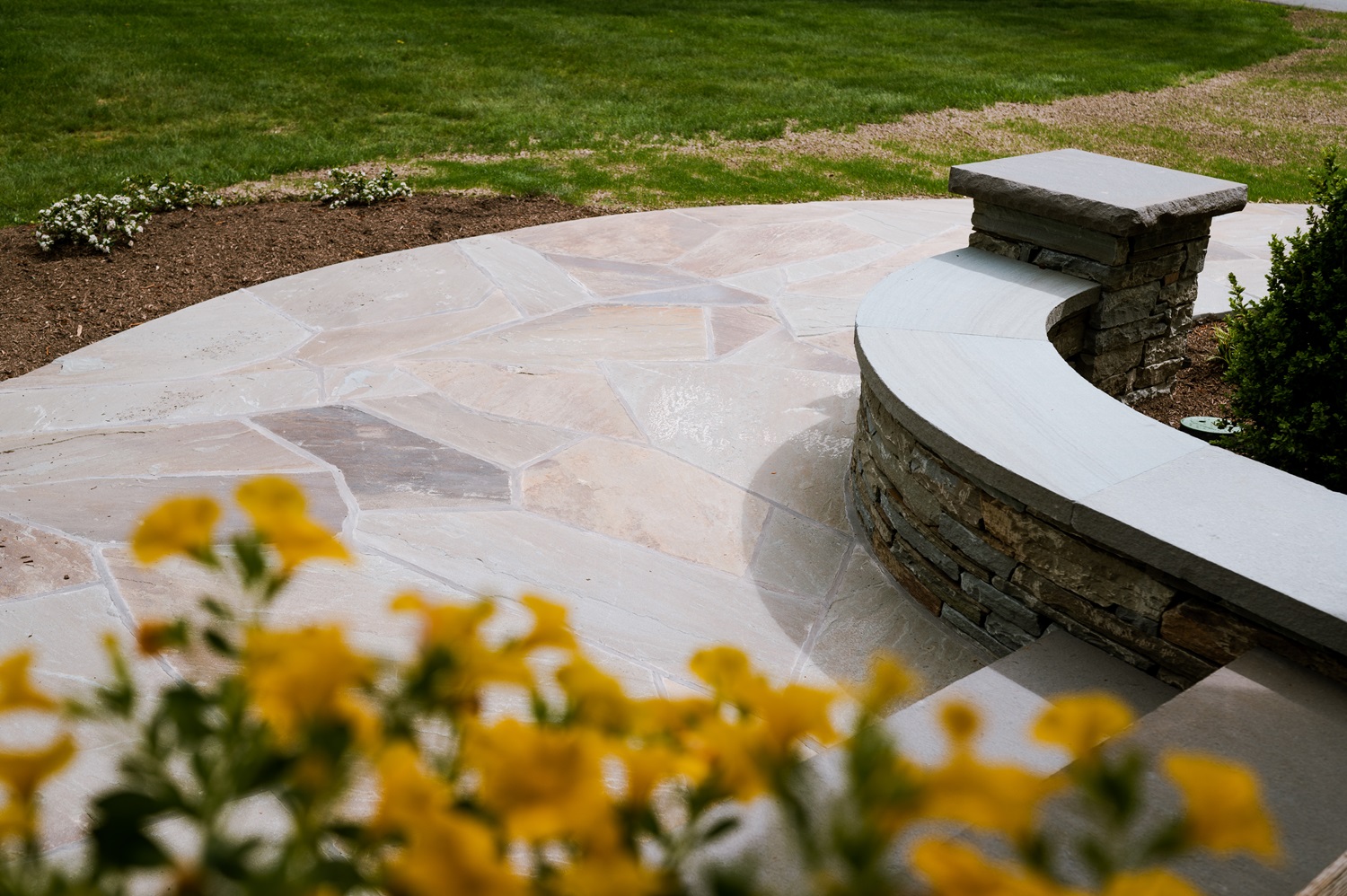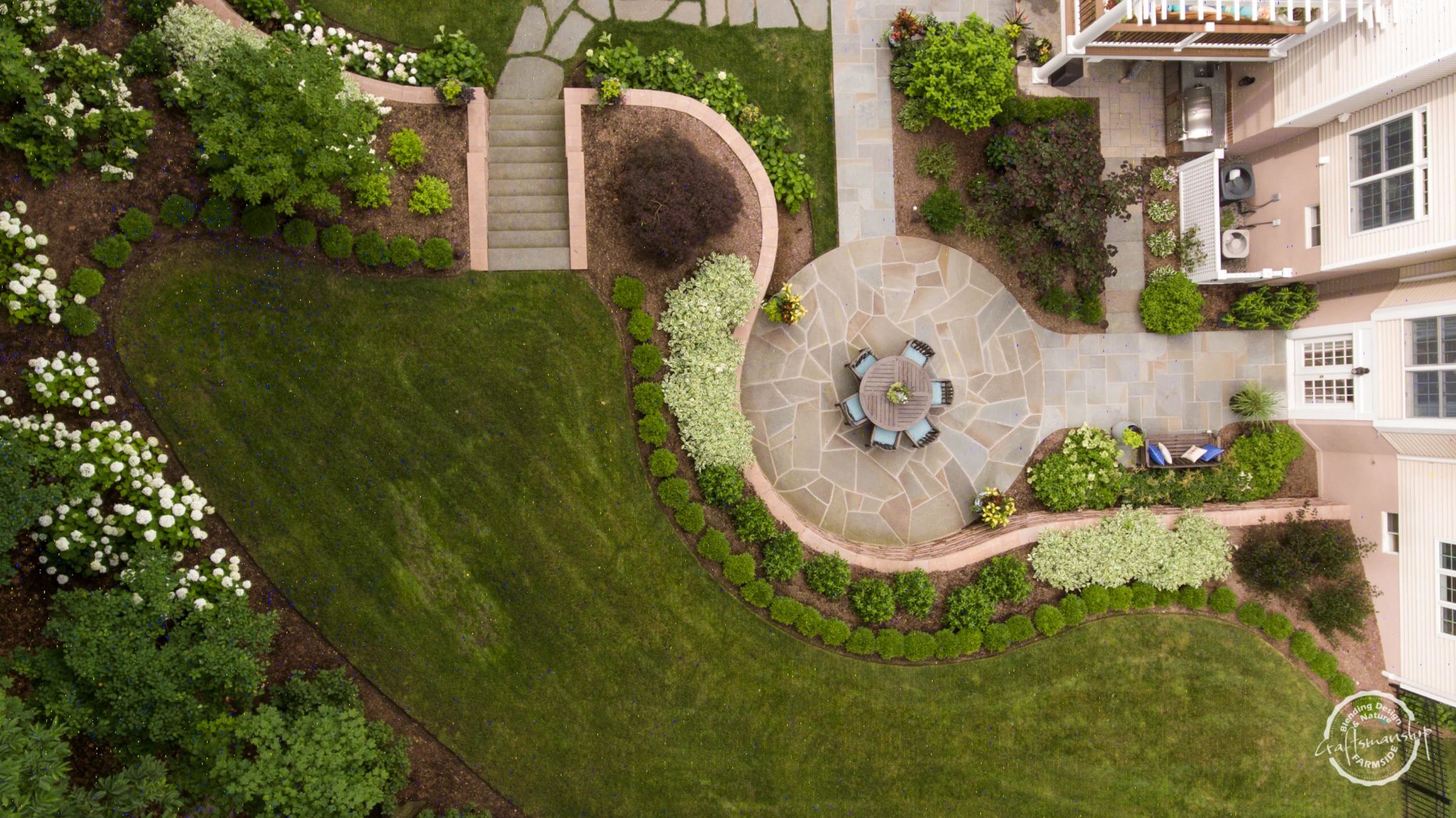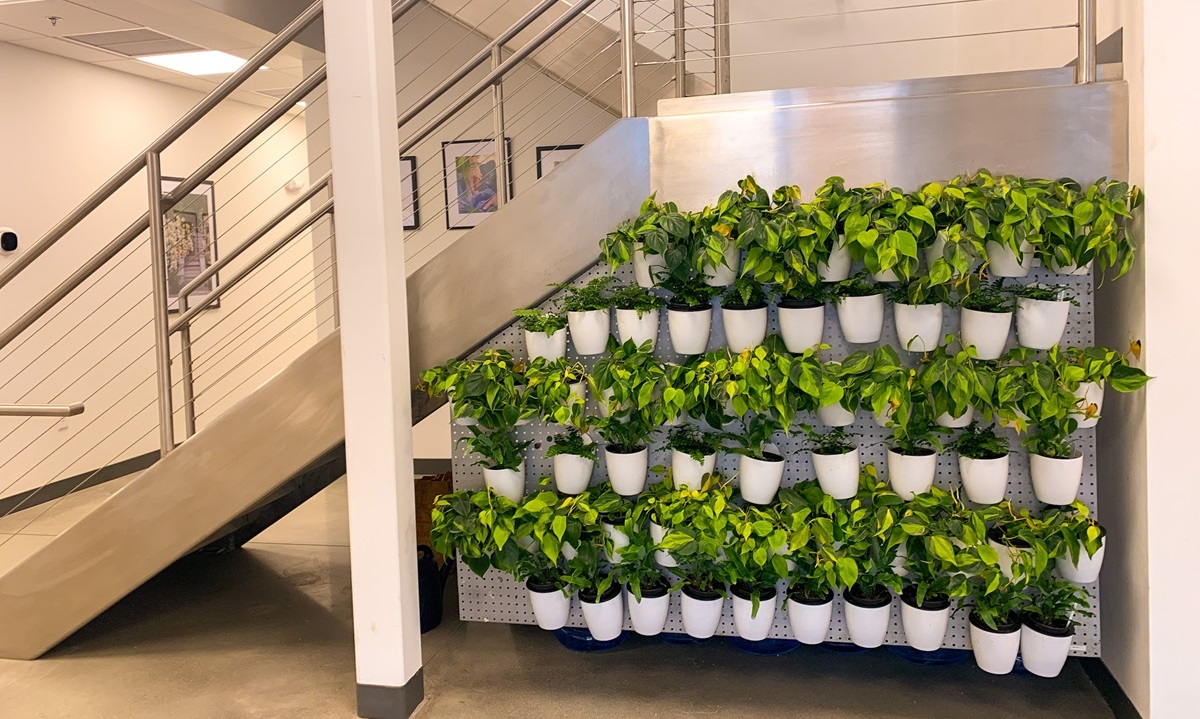Butterfly Bush (Buddleia davidii) is a beautiful, fast-growing, deciduous shrub with masses of blossoms—long, spiked trusses—that bloom from summer to autumn, making it a favorite among blooming shrubs.
There are some considerations that come with adding Butterfly Bush to your garden:
Butterfly Bush, a native of China, has been classified as an invasive species in most regions in the U.S., meaning its aggressive spreading habit can crowd out native plants essential to our wildlife, birds and butterflies. That said, many new cultivars have been developed that produce sterile seeds, halting the plant’s invasive spreading habit. Opting to grow one of these new cultivars, or to plant the shrub in a container are ways of keeping invasiveness in check.
While Butterfly Bush provides nectar to adult butterflies, it is not a “host” plant – meaning, it does not sustain butterflies throughout their reproductive and entire life cycle. Caterpillars and larvae require host plants in addition to Butterfly Bush to survive, so consider pairing host plants such as Milkweed, Dill and Asters along with your Butterfly Bush to ensure keeping butterflies in your garden.
Butterfly Bushes are very easy to grow, but have certain requirements to ensure that they thrive. This includes full sun (8 hours of bright sunlight), and excellent drainage since their roots are sensitive to rotting if they spend time in wet soil. Note: If you lose a Butterfly Bush after winter, it’s more likely it died from having its roots in the cold, wet soil of spring or fall, rather than cold winter temps, snow or ice.
Proper soil is also essential to Butterfly Bush health. Clay soil can present a problem due to its tendency to remain cold and wet. While clay soils’ ability to retain water usually benefits plants, this doesn’t hold true for Butterfly Bush. You can check how well your soil drains before planting anything by digging a hole about the size of the plant. Fill it to the top with water and come back and check on it every 30 minutes or so. The faster the water disappears, the better your drainage is. If there is still water in the hole after four hours, you have poorly drained soil.
Don’t amend clay soil. This is true for Butterfly Bush and any shrub you’re planting. By amending clay soil with potting soil, or other “good” soils, you create a condition where water gets readily absorbed by these lighter soils, only to then sit and pool once it gets to the clay portion of the ground. Now you have a pool of water in which the shrub’s roots sit until the water can percolate through the more dense soil – a perfect set up for root rot for plants sensitive to these conditions.
If you find you have heavy clay soil, a container might be a better choice for your Butterfly Bush. Be sure to select a container that has several large drainage holes, and can be left outdoors year-round. Fill the container only with a fast-draining, lightweight potting mix.
When planting your Butterfly Bush, plant “high” – meaning, that instead of positioning the plant on ground level like most plantings, keep it a bit above ground by digging a more shallow hole. In this way, you create a small hill that encourages water to drain away from the plant rather than pool around its base.
Mulch can be a bit tricky with Butterfly Bush. While it can help regulate the flow of water during a heavy rain, it also helps retain soil moisture that, in clay, can be a problem for sensitive roots. Mulch your beds, but keep some clearance around the Butterfly Bush, and never mulch up to the main stems.
Prune your Butterfly Bush in the spring, after you see new growth emerge. Resist the urge to prune during fall cleanup since this can leave the bush more susceptible to winter damage. Even in the spring, wait until you see green buds on the stems before you prune. Then, trim just above where the healthy leaf buds have formed.
Butterfly Bush likes to “sleep in” for spring, so don’t despair if it seems like everything else is coming back to life in your garden in spring except for this bush. A good rule of thumb is to wait until Father’s Day (3rd week in June) to decide whether or not your bush is coming back.
Plant your Butterfly Bush in spring to mid-summer, not the fall. This allows the shrub to develop a strong root system before dealing with a cold wet winter. Be careful not to overwater, especially if you have an irrigation system. Signs of overwatering include fewer flowers, weak stems and dieback.
Now let’s look at some great cultivars of Butterfly Bush to consider:
Kaleidoscope Butterfly Bush – The first Buddleia to offer multiple colors on one panicle. Stunning blooms of lavender, pink and tangerine make this option a star attraction in your garden and to hummingbirds and butterflies, too. Blooms from midsummer into fall. Very easy to grow, tolerating heat, poor soil and drought. Shrubs grow to about 6’-8′ tall and wide.
Proven Winners InSpired® Series – Large and colorful, these shrubs are similar to old-fashioned varieties, with very large, showy flowers and a lovely fragrance. These can get quite tall, reaching over 8 feet in height.
Proven Winners Lo & Behold® Series – Overall shape is small and mounded, perfect for flower gardens. ‘Purple Haze’ is the largest of this series with ‘Pink Micro Chip’ the smallest. ‘Blue Chip Jr.’ is the earliest to bloom in the series
Proven Winners “Miss” Series – Medium height (4-5+’ tall), this cultivar has a refined, elegant habit, with intense colors. The flowers of ‘Miss Molly’ are almost a true red and ‘Miss Pearl’ offers blooms so white they seem to glow at night.
Proven Winners Pugster® Series – Just like the beloved pup it’s named after, this variety is short and stocky, with full-sized flowers in saturated hues, including the true-blue bloom of Pugster Blue. The thick stems of this series make it an excellent choice for areas where Butterfly Bush experience a lot of winter dieback.
Proven Winners ‘Summer Skies’ – Large and bold, with eye-catching variegated foliage that makes it look like it’s always kissed by the sun. Stunning purple blooms appear in mid-summer.
Note: Most Butterfly Bushes grow to around 6 feet tall, although some will grow a few feet taller given the right circumstances. Dwarf versions are typically 2- to 3-feet tall and wide, such as Proven Winners’ Lo & Behold series. However, some “dwarf” varieties can reach 3- to 7-feet tall and wide at maturity, such as “Asian Moon.”
Looking for more info on how to attract butterflies and other beneficials to your garden? Contact us at Farmside Landscape & Design for plenty of naturally-inspired ideas!

